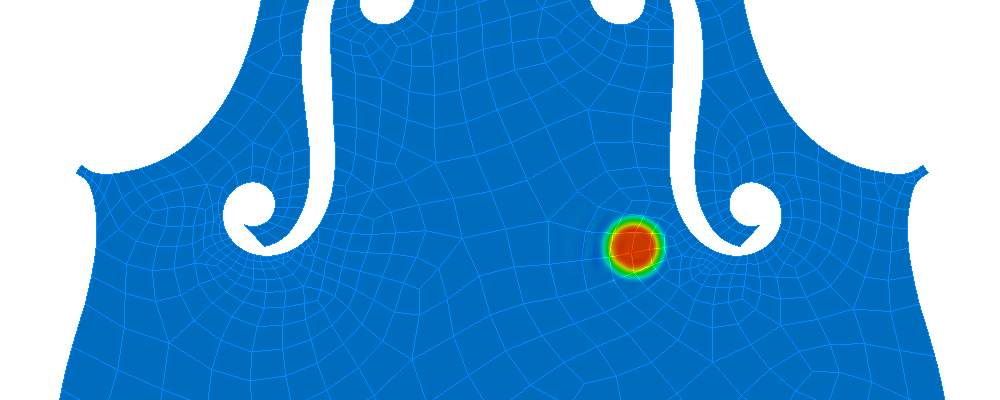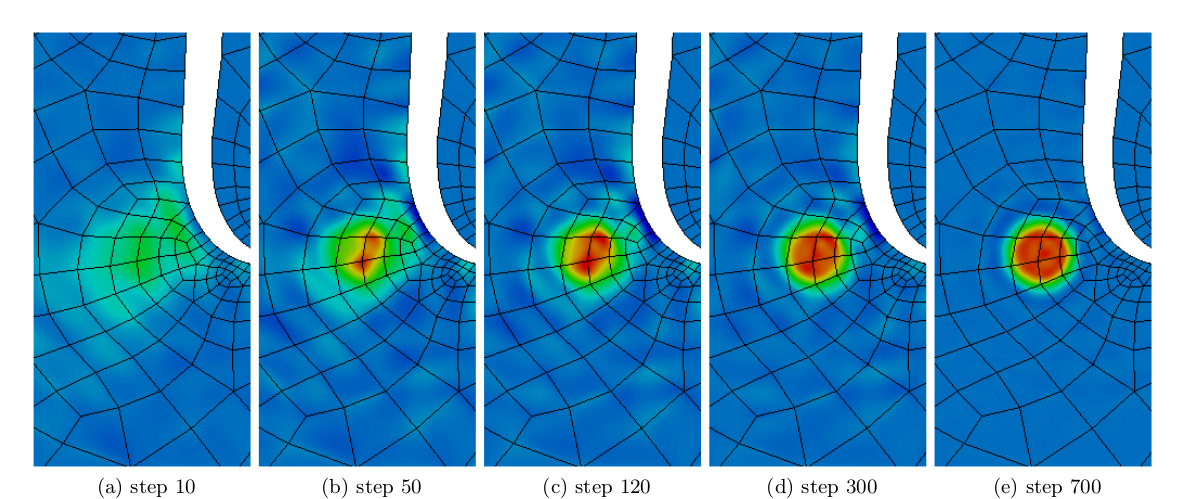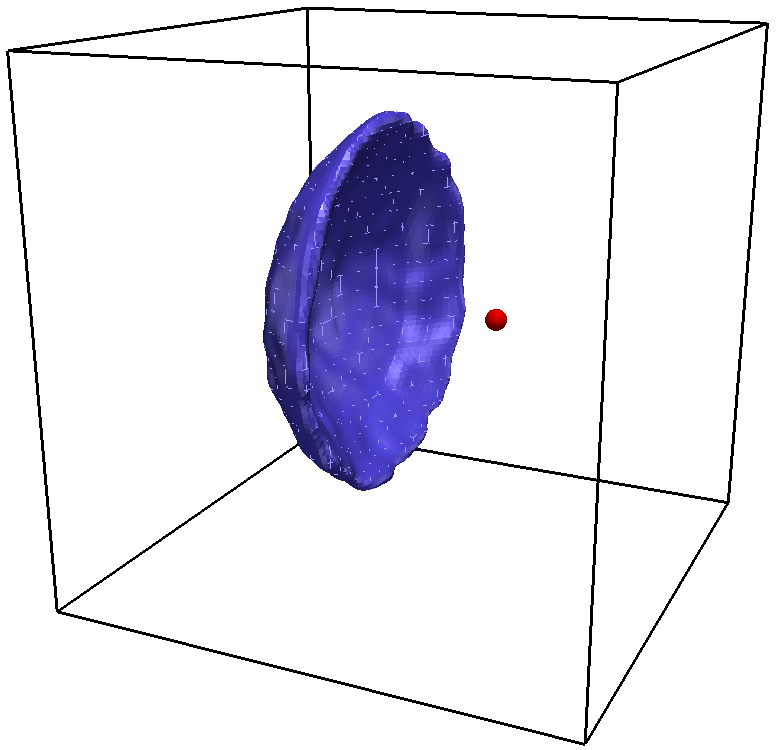Philipp Kopp, Nina Korshunova
The time-reversed acoustics is used in many applications, for example in destruction of kidney stones, mine detections, detection of defects in material etc. The sound, sent from a transducer, is converging exactly towards the source, as the time has been reversed. Experimental data does not provide any information on the position, orientation or material of the existent flaw inside the interior of the specimen. Therefore, with the help of full waveform inversion simulation all these information can be gained. The idea is to use synthetically generated wave speed data on the undamaged material model together with experimental data to perform non-linear optimization problem. During the detection of the crack, simulated sensor measurements are adapted so that they produce the recorded experimental data by optimizing the material parameters of the flaw and its position. The full waveform inversion has been implemented using Finite Element Method. Different tests were run to determine the number of necessary transducers for the detection of the crack in the material. Further, the tests rising the complexity of the geometry and the crack form has been performed. In Figure 1 the part of the violin is shown together with the projected (desired) crack shape. Figure 2 shows the results of the full waveform inversion with respect to the number of steepest descent iteration steps being performed. It can be noticed, that during the first iterations the wave speed of the crack material is gained, while in the rest, the shape of it is detected. Figure 3 presentes the detected spherical crack in the cube after 50 steepest descent iteration steps.
 |
Fig.1: The projected (desired) crack in the part of the violin
Fig.2: The full waveform inversion in the part of the violin with respect to the number of the steepest descent iteration steps
Fig.3: The detected spherical crack within three-dimensional body after 50 steepest descent iteration steps
References
| [1] |
Fichtner, A.
Full Seismic Waveform Modelling and Inversion.
Springer Verlag, 2010. |
| [2] |
Fichtner, A.
Full Seismic Waveform Inversion for Structural and Source Parameters
PhD Thesis, 2009. |
| [2] |
Seidl, R.; Rank, E.
Iterative time reversal based flaw identification
Computers & Mathematics with Applications 72 (4), pp. 879-892, 2016. |



